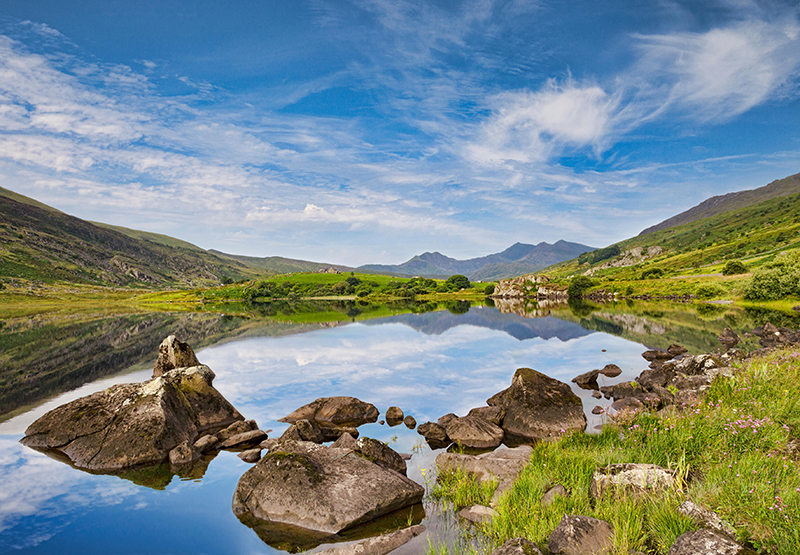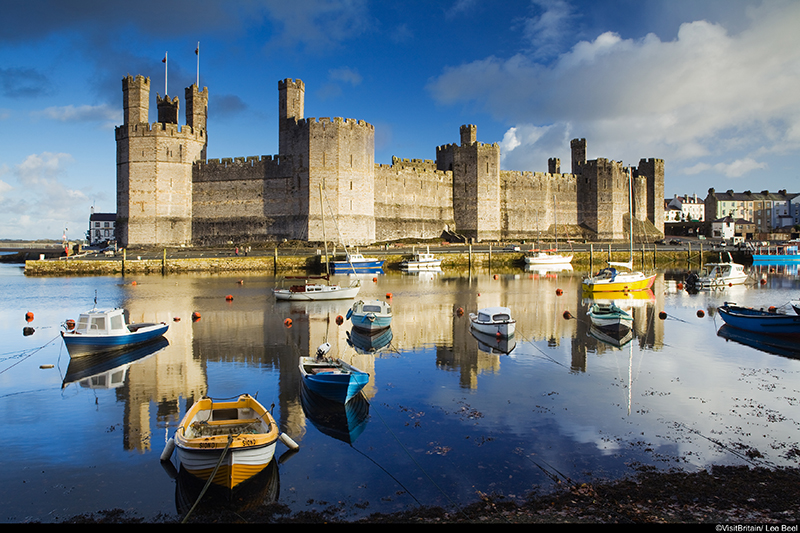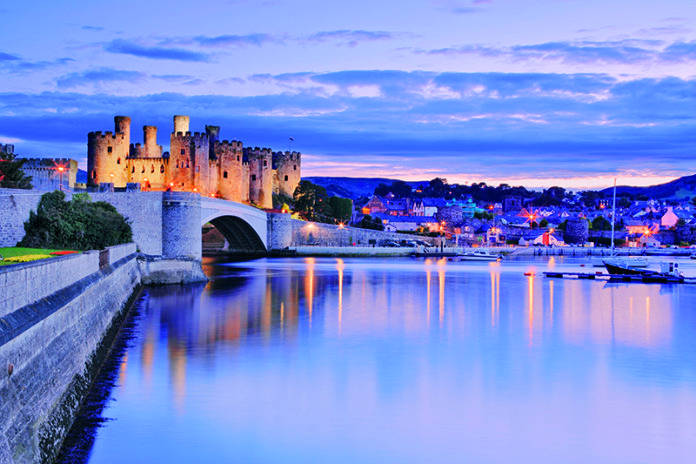The rugged beauty of north Wales has attracted a gallery of artists and poets. We find the castles and landscapes that inspired them
Daniel Defoe, author of Robinson Crusoe, described north Wales as “full of horror”. The region was remote; the landscape wild and rugged. Yet within decades, artists and writers thronged to get there. The painter JMW Turner went five times at the end of the 18th century; the poet William Wordsworth slogged up Snowdon one summer. North Wales was the ideal setting for the Romantic movement: the trend of the day.

The Romantics glorified nature and the past. They sought to experience the “sublime” (a sense of fear and awe) and depict the “picturesque” (composed scenes with unruly elements). Wordsworth argued that poetry should begin as “the spontaneous over ow of powerful feelings”. Emotion was vital. With its grandeur and mystery, north Wales encapsulated Romantic ideas. Artistic and literary types traipsed up Snowdon, the country’s highest mountain, traversing the smaller peaks of Aran Fawddwy and Cader Idris. They ogled Caernarfon Castle, a medieval fortress, and gazed at Dolbadarn Castle and Conwy Castle. At every pace, they contemplated Creation and destruction, enrapt by wonder.
Who first saw the potential of Wales? Was it Turner or Wordsworth? Or was it a now half- forgotten gure? Turner might be the more well- known artist, but without Richard Wilson who knows what he would have created?
Wilson was born in 1714 in the village of Penegoes, now in Powys, north Wales. The son of a clergyman, he started out painting portraits, but switched to landscapes during a trip to Italy in the 1750s. Back home, Wilson received commissions from English and Welsh landowners wanting their estates painted in the Italian style to remind them of their Grand Tours of Europe. Wilson toured Wales and saw it in a new way. Others had seen the country as inhospitable; Wilson pictured grand views.
Landscape painters had put the ideal before the real. Not anymore. Wilson captured the cragginess of the rocks and the sogginess of the air; he made the light dance. Artists had drawn from nature, before returning to their studio to paint fantastical versions. Wilson pioneered plein-air oil sketches – on location.
The mountainous scenery fascinated Wilson, as seen in Snowdon from Llyn Nantlle. At 1,085m (3,560ft), Snowdon (meaning ‘snowfall’ in Old English) is the highest point in the British Isles outside the Scottish Highlands. From the summit, on a clear day, you can see England, Scotland, Ireland and the Isle of Man – or, if you know your geography, 24 counties, 29 lakes and 17 islands.
It is also steeped in Arthurian legend. At the top lies the tomb of the giant Rhitta Gawr, giving the mountain its Welsh name, Yr Wyddfa (meaning an ancient burial mound). Rhitta Gawr wore coats made of men’s beards and was killed by King Arthur for coveting his.
Wilson’s painting Llyn-y-Cau, Cader Idris shows the volcanic lake beside another mountain. Cader Idris means the Chair of Idris, referring either to a giant called Idris, who, according to myth, perched on the peak, or Idris ap Gwyddno, a 7th-century prince who defeated the Irish there. Castles also attracted the painter, as in Caernarvon Castle. The castle was constructed by Edward I in the late 13th century, just after the English had conquered Wales. With its polygonal towers, it was the most expensive fortress built by a king of England.

Wilson’s Llyn Peris and Dolbadarn Castle depicts the ruins of the fortress built by the Welsh prince Llywelyn ap Gruffydd, again during the 13th century. Known as Llywelyn the Last, the royal was the nal indigenous Prince of Wales, and imprisoned his brother Owain Goch ap Gruffydd in the castle for 20 years for insurrection.
Wilson became relatively successful; he was even a founder member of the Royal Academy. But by the 1770s, his fortunes declined and he turned to drink. Turner was a small boy when Wilson died in 1782, but he soon became a fan. Turner made the first of five trips to Wales aged just 17. He sketched views captured by the painter and visited his birthplace.
It is no coincidence that Turner’s Llyn Nantlle with Snowdon Beyond shares a similar title to a work by Wilson. Nor that Dolbadarn Castle, his diploma composition shown at the Royal Academy, was of a site Wilson had also captured. They also both painted Conwy Castle, another 13th-century fortress built by Edward I.
North Wales also attracted poets, drawn to the same locations. Wordsworth was born in Cockermouth near the Lake District in 1770. In 1791, he stayed with his friend Robert Jones and his family at Plas-yn-Llan in Denbigh, north Wales for four months. His sister Dorothy recalled: “My brother William… is now in Wales where I think he seems so happy that it is probable he will remain there all summer or a great part of it.” Wordsworth and Jones walked through much of the area. The poet outlined the tour in his book Descriptive Sketches: it began with “the sea-sunsets which gave such splendour to the Vale of Clwyd… [then]… Snowdon and the Chair of Idris… and the windings of the wizard stream of the Dee”.
Wordsworth went to north Wales again in 1792, and years later, in 1824, with his wife and daughter. The fourteenth book of The Prelude, his semi-autobiographical poem, starts with his ascent of Snowdon, with Wordsworth hoping that his Welsh excursions “ne’er / Fade from remembrance!”. On the last trip, he wrote a sonnet to the Ladies of Llangollen, rhapsodising about the Dee Valley as a “wild sequestered region”.
By the 1850s, the Romantic movement had fallen out of fashion, but interest picked up again in the late 1930s and 1940s. Neo-Romanticism combined Romantic and modernist ideas, including cubism and surrealism. North Wales again held an allure, particularly for John Piper. Piper was born in 1903 in Epsom, Surrey. An official war artist during the Second World War, he was commissioned to paint Manod Mawr quarry, a disused slate mine in Blaenau Ffestiniog in north Wales. The quarry housed paintings from the National Gallery and Royal Collection, protecting them from the Blitz. Piper cycled around the area, sketching and taking photographs. Between 1943 and 1951, he went to Snowdonia every year to paint. Piper was struck by the same mountains and castles as the Romantics. Turner had painted the mountain Aran Fawddwy in his watercolour A Single-Arched Stone Bridge and a Cottage, with Aran Fawddwy Beyond. Piper zoomed in on it in his oil painting, The Rise of the Dovey.
Like Wilson, Piper got close to the land, even in the cold and wet. He sketched in ink outside and then produced larger paintings in his studio. “I saw the bones and the structure and the lie of the mountains, living with them and climbing them as I was,” he said of one trip, “lying on them in the sun and getting soaked with rain in their cloud cover and enclosed in their improbable, private rock-world in fog.” Mountains feature in many of his works, from Near and Far Rocks, Tryfan to Cader Idris.
You don’t have to be an artist or a writer today to appreciate this beautiful region. While parts are remote, we have the luxury of trains and cars. North Wales is wild and rugged, but that’s its appeal. Someone just needs to tell Daniel Defoe.






 © 2024
© 2024